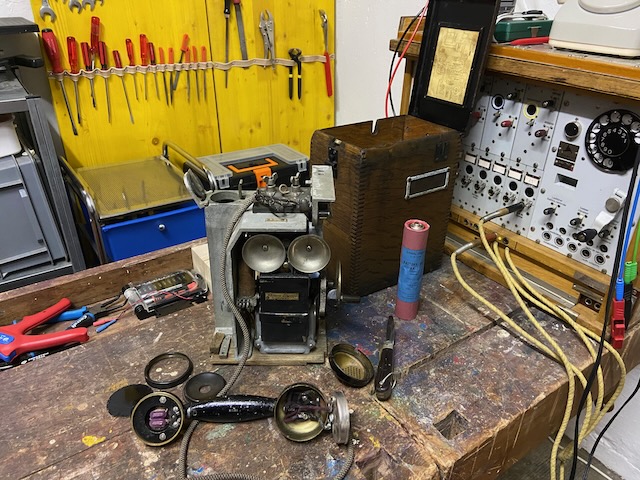
Find more details on U.S. fieldphone history on the U.S. Signal Corps Field Telephones Timeline.
Shortly before or in parallel to the U.S. entering WWI (by war declaration to Germany in April 1917) the Signal Corps took a couple of new field telephony devices into service, the Field Telephone Model 1917, the Camp Telephone Model 1917 and Camp Telephone Model A and a standard Western Electric railroad portable Telephone (1375B), all of which replaced the Camp Telephone from 1913. Camp Telephone Model 1917 is an improvement of the Model 1913 design using a bigger magneto (3-Bar instead of 2), the here discussed Model A is a further improvement adding a capacitor to the ringer. All Camp Telephone Model A were made by Western Electric and got the designation EE-4 by 1918 [1]. They were in use up to and into WWII but soon replaced by the EE-8 [5] [6].
Basic Signal Communication. Training Manual No. 20. Students Manual (1923) [3]:
The telephone, type EE-4, is a telephone set which is intended for universal use in connection with both magneto and common battery telephone systems. When talking, the hand set must be off the hook, so that the latter will connect and disconnect the proper circuits through the spring contacts. The various parts of this set are mounted compactly in an aluminum frame which provides a rigid and convenient support for them and leaves a space in one corner sufficiently large for packing in the hand set. Mounted on a hard-rubber terminal plate on top of the aluminum frame are the parts which are necessarily accessible. These comprise two nickel-plated binding posts, three terminals for connecting in the hand set, and two terminals for connecting in an external battery in case the regular battery is not available.
Basic Field Manual. Signal Communication. FM 24-5 (1939) [4]:
The telephone EE 4 is contained in a wooden case with an adjustable carrying strap and weighs 18 pounds. It has a generator for ringing and a bell for being signalled. All elements except the handset are mounted in an aluminum alloy frame which is held in place by machine screws. When installed, the handset hangs from a hook switch outside of the case. When packed for transportation, the handset is placed inside the case in the space between the frame and the case. The hook switch lever also folds inside the case, and care must be taken to see that this is done whenever the telephone is packed for transportation, otherwise the battery will quickly run down. One battery BA-1 (3 volts) furnishes power for transmission and is inserted in a compartment in the frame.
Fold-in hook switch which disconnects the battery when folded in.
Disassembled.

Disassembled handset.
The handle is also metal, painted black.
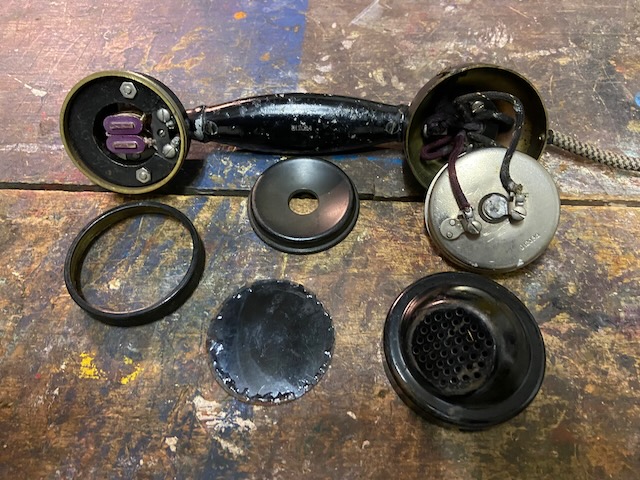
Line binding posts with wing nuts.
There are also connections for an external battery.

Hookswitch lever folded out in off hook position.
When folded in the second pin forces the contacts into "on hook" (open).

Body front.
On the left the compartment for the handset.
Left of the magneto the induction coil is visible.
On top of the magneto the ringer and in front the capacitor ("Western Electric").
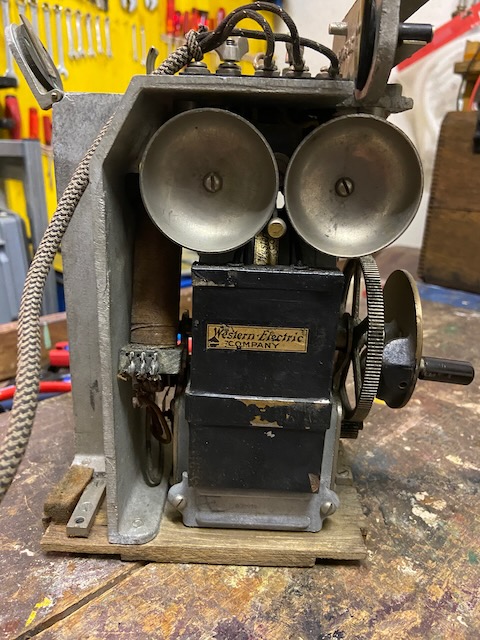
Body back.
On the right the battery compartment.
The BA-1 battery is a self made replica.

Neatly arranged parts.
The wood box with metal lid is heavily weathered.
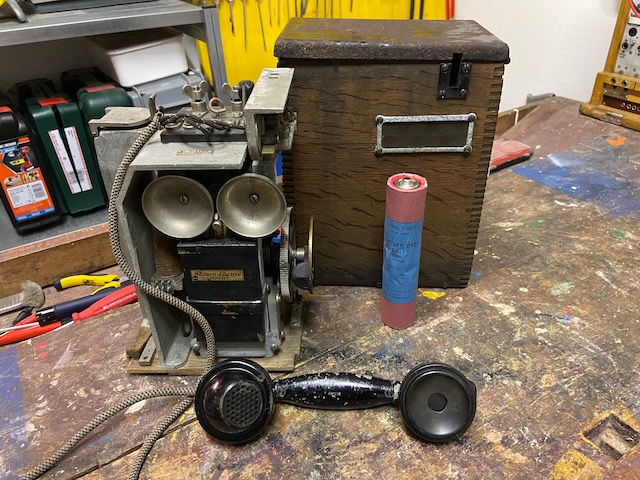
The wiring diagram (mounted inside the top lid).
The ringer/condenser are connected directly to the line.
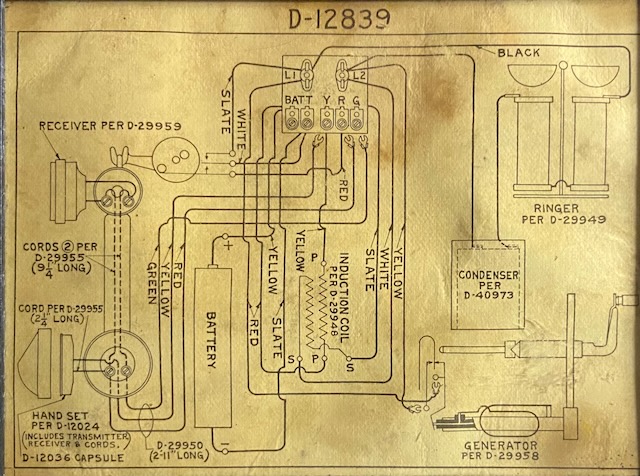
Unfortunately the bottom lid is missing on this specimen.
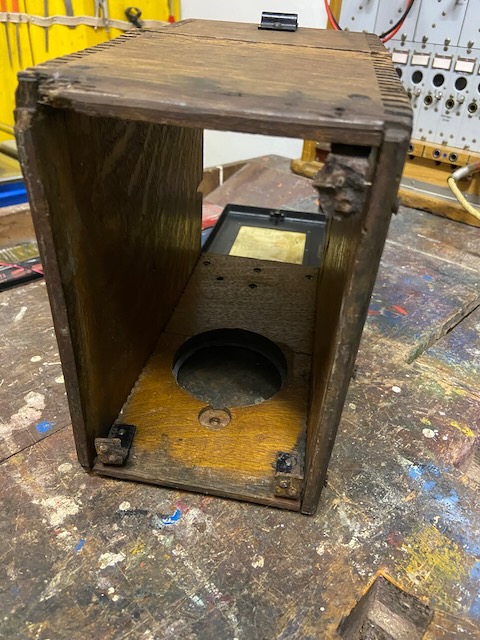
Ready to use, magneto handle folded out, handset on hook.

Handset stored.
Battery lid closed.
Hook lever folded in.
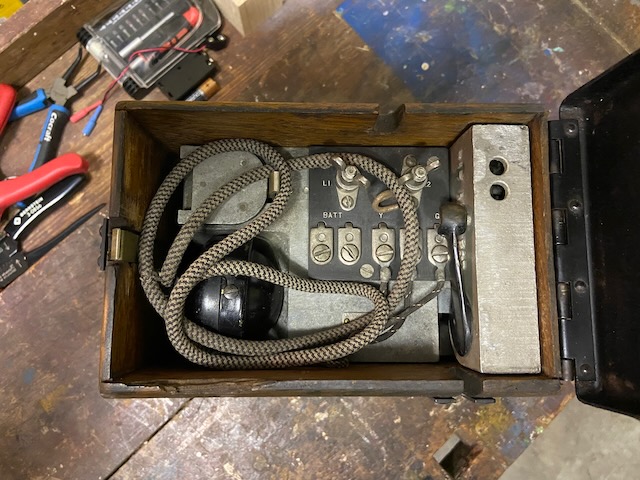
Stored from front.
The mesh window leaves ringer sound out.

Stored from back.

Creative Commons Attribution-ShareAlike 4.0 International License